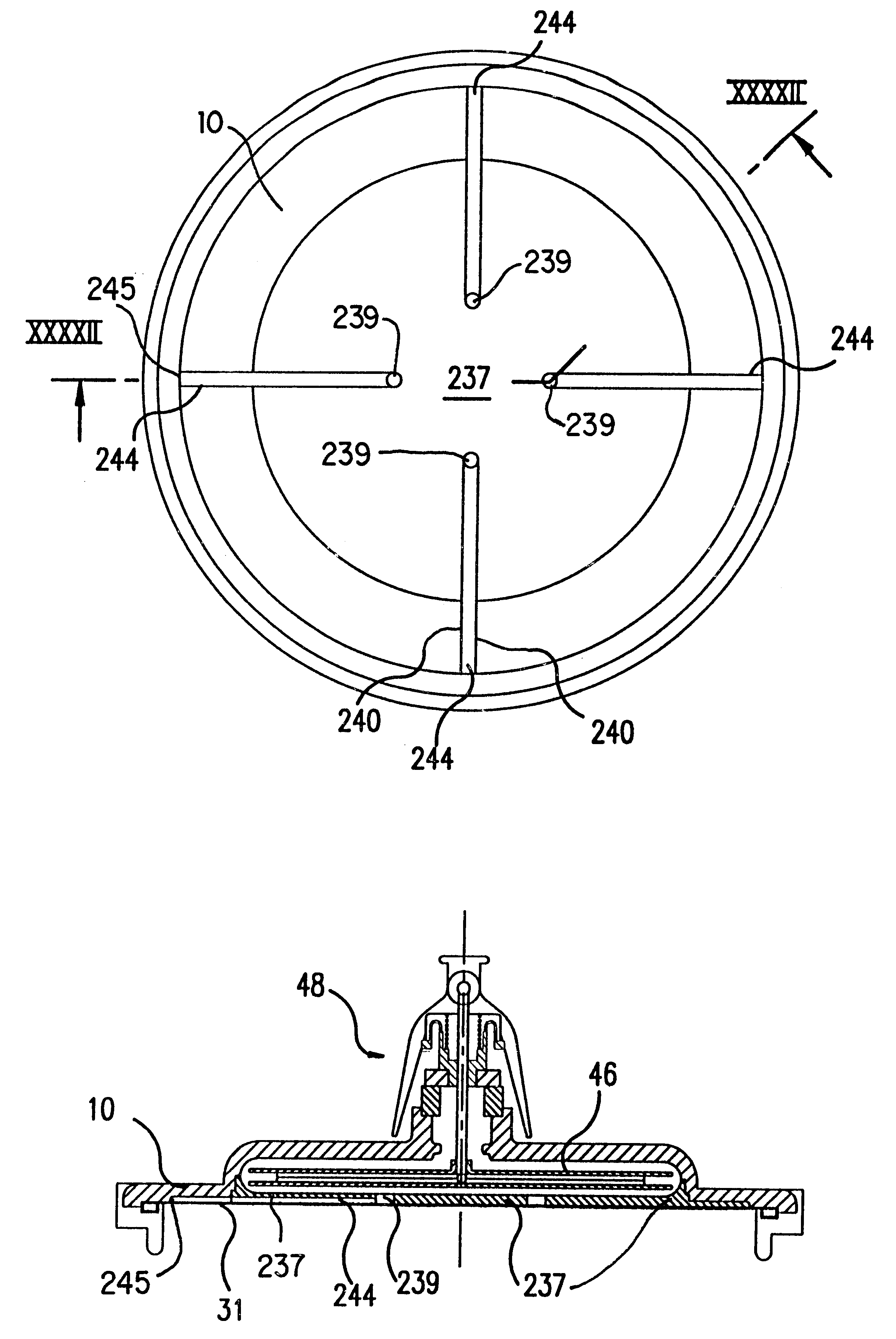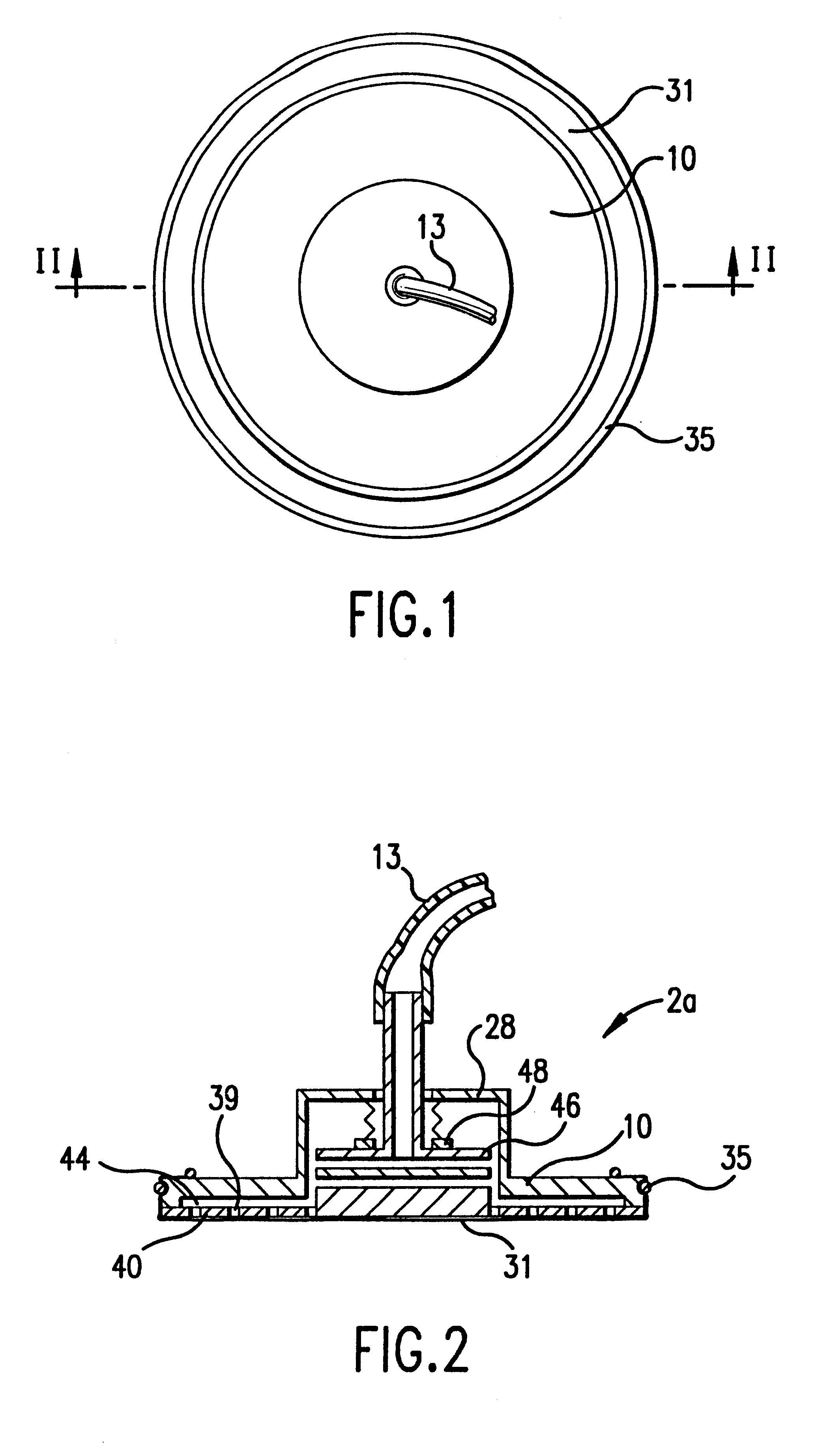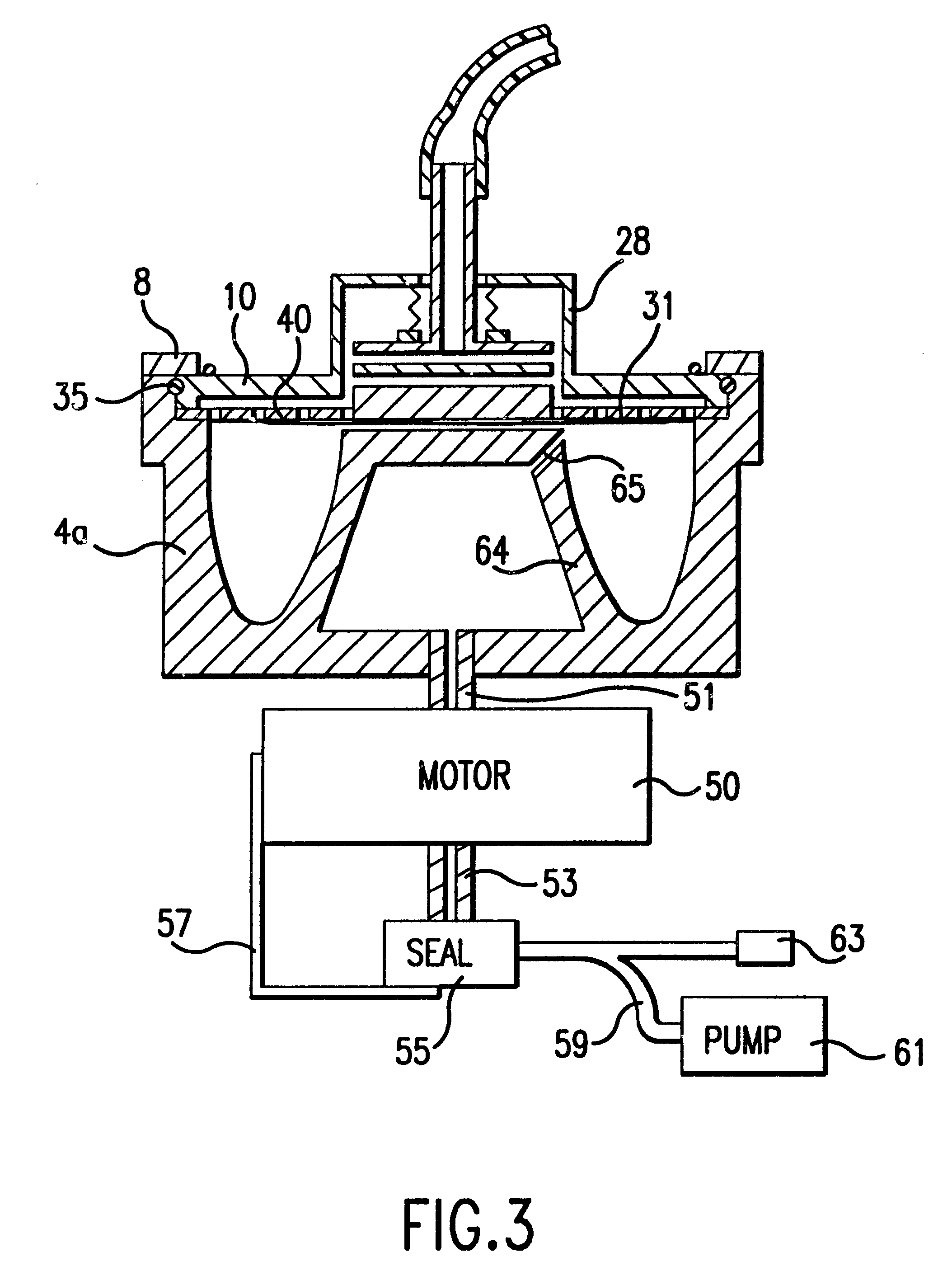Rotor with elastic diaphragm defining a liquid separating chamber of varying volume
a rotor and diaphragm technology, applied in the field of blood processing systems, can solve the problems of large diaphragm diameter, large extracorporeal volume, complicated setup and use,
- Summary
- Abstract
- Description
- Claims
- Application Information
AI Technical Summary
Problems solved by technology
Method used
Image
Examples
Embodiment Construction
FIGS. 1 and 2 show a version of the centrifuge rotor 2a according to the present invention. The rotor 2a has an elastic boundary, i.e., an impermeable diaphragm 31, which is sealed to a rigid, imperforate boundary wall 10 by an O-ring 35 or other means. The diaphragm 31 is preferably made of an elastic, stretchable and resilient material, such as latex or silicone rubber. A perforate interior wall 40--also referred to as a plate--having holes 39 is attached under the rigid boundary wall 10. Preferably, the boundary wall 10 and the interior wall 40 are made out of a rigid thermoplastic. The perforate interior plate 40 is held a short distance away from the imperforate boundary wall 10 by standoffs (not shown), thereby forming a passage 44.
The rotor 2a also has a collector assembly 46, which is attached to tube 13, and a rotary seal 48, which maintains the sterile environment in the rotor 2a but allows the rotor to turn even while the collector assembly is held stationary. The rotary ...
PUM
 Login to View More
Login to View More Abstract
Description
Claims
Application Information
 Login to View More
Login to View More - R&D
- Intellectual Property
- Life Sciences
- Materials
- Tech Scout
- Unparalleled Data Quality
- Higher Quality Content
- 60% Fewer Hallucinations
Browse by: Latest US Patents, China's latest patents, Technical Efficacy Thesaurus, Application Domain, Technology Topic, Popular Technical Reports.
© 2025 PatSnap. All rights reserved.Legal|Privacy policy|Modern Slavery Act Transparency Statement|Sitemap|About US| Contact US: help@patsnap.com



